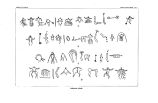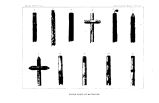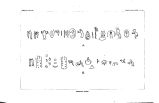| OCR Text |
Show POWRLL.] LINGUISTIC MAP. 27 them apart until more material shall have accumulated and proof of a more convincing character shall have been brought forward. While some of the families indicated on the map may in future be united to other families, and the number thus be reduced, there seems to be no ground for the belief that the total of the linguistic families of this country will be materially diminished, at least under the present methods of linguistic analysis, for there is little reason to doubt that, as the result of investigation in the field, there will be discovered tribes speaking languages not classifiable under any of the present families; thus the decrease in the total by reason of consolidation may be compensated by a corresponding increase through discovery. It may even be possible that some of the similarities used in combining languages into families may, on further study, prove to be adventitious, and the number may be increased thereby. To which side the numerical balance will fall remains for the future to decide. As stated above, all the families occupy the same basis of dissimilarity from one another- i. e., none of them are related- and consequently no two of them are either more or less alike than any other two, except in so far as mere coincidences and borrowed material may be said to constitute likeness and relationship. Coincidences in the nature of superficial word resemblances are common in all languages of the world. No matter how widely separated geographically two families of languages may be, no matter how unlike their vocabularies, how distinct their origin, some words may always be found which appear upon superficial examination to indicate relationship. There is not a single Indian linguistic family, for instance, which does not contain words similar in sound, and more rarely similar in both sound and meaning, to words in English, Chinese, Hebrew, and other languages. Not only do such resemblances exist, but they have been discovered and pointed out, not as mere adventitious similarities, but as proof of genetic relationship. Borrowed linguistic material also appears in every family, tempting the unwary investigator into making false analogies and drawing erroneous conclusions. Neither coincidences nor borrowed material, however, can be properly regarded as evidence of cognation. While occupying the same plane of genetic dissimilarity, the families are by no means alike as regards either the extent of territory occupied, the number of tribes grouped under them respectively, or the number of languages and dialects of which they are composed. Some of them cover wide areas, whose dimensions are stated . in terms of latitude and longitude rather than by miles. Others occupy so little space that the colors representing them are hardly discernible upon the map. Some of them contain but a single tribe; others are represented by scores of tribes. In the case of a few, the term " family " is commensurate with language, since there is but one |














































































































































































































































































































































































































